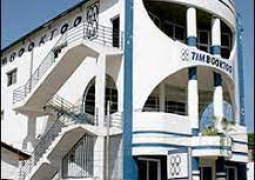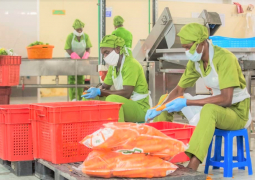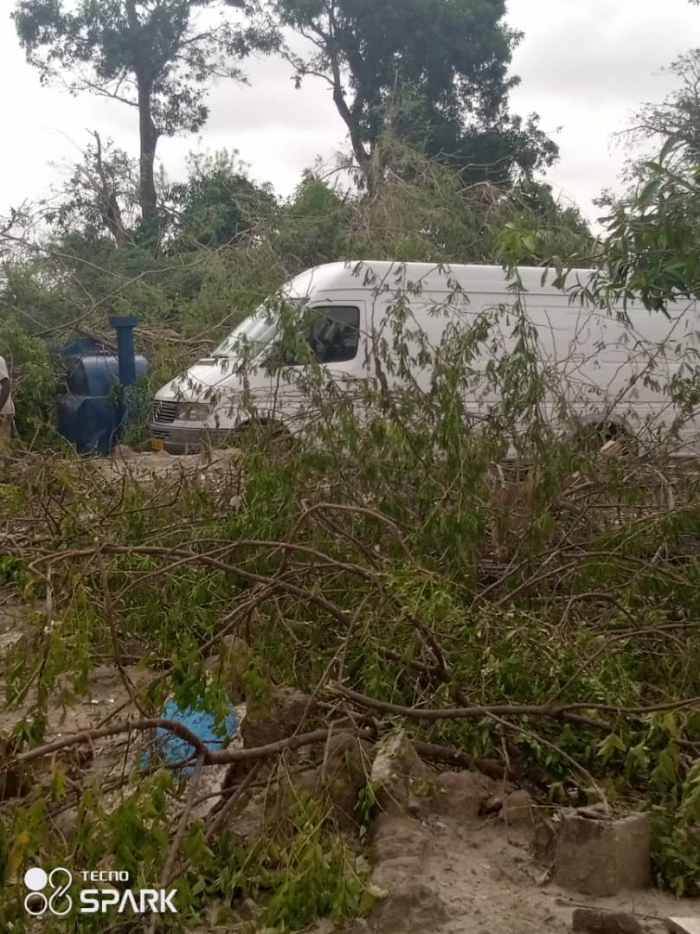
BANJUL, 27 September, 2021 – Njawara, like many other settlements is a small rural town on the North Bank of the River Gambia. It had vast farmlands and green vegetation that forms lovely views to the eye in the summer. When the windstorm hit the country this July, it killed 14 people across the country; among them were two from Njawara village.
The storm uprooted trees and damaged properties, pulling out corrugated roofs with palm timbers. A big mango tree fell on Mama M.K. Manneh and Salieu Samba’s houses, two staff of the Njawara Agricultural Training Centre (NATC) who reside in a hostel in the village. They were forced to move out of their houses and seek shelter elsewhere. Even in those houses, they had lived in flooded rooms for three days before abandoning the rooms.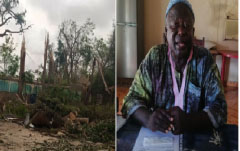
Mama M.K. Manneh, NATC’s director
Mr. Manneh has described this windstorm as a tsunami. At least 157,720 people were affected by the windstorm with 35,329 internally displaced across the country; some 39,696 shelters were damaged. The North Bank Region (NBR) took the lion share of the devastation, with Njawara village being the hardest hit by the storm.
“If trees can protect people against climate change, we would have been protected,” says Mr. Manneh, director of the Njawara Agricultural Training Centre (NATC).
Over 1.6 million dalasis (US$33,000) infrastructural damage has been assessed at the NATC. The storm also led to serious electrical breakdowns within the Greater Banjul Area and the West Coast region, hampering crucial services.
“This is a tsunami in my own view considering the level of destruction and damage. Two people died as a result of the devastation,” Mr. Manneh, who, after a month, lost his colleague whose house was struck by the storm.
The NATC teaches people on resilience building and climate smart agriculture among a host of other climate change related issues. But this storm did not spare their own buildings.
President Adama Barrow visited Njawara village a day after the storm and promised his government’s support to NATC.
Mr. Manneh blames the West and other technological countries for what he described as too much interference with nature, resulting in innocent poor people in Africa feeling the pinch of those activities.
“So giving us money to try to regulate the damages caused by their activities is very minimal when you look at the rate and magnitude of the suffering we are enduring. So therefore we cannot fix our long term problems; it’s not possible.”
“If you go to the sea, we are suffering. Look, in fact the quality of air we are breathing is caused by them.”
“Almost all the compounds in this village have been destroyed by the wind; but the question is, whose house is destroyed the most?” Aji Haddy Panneh, head of the village points out.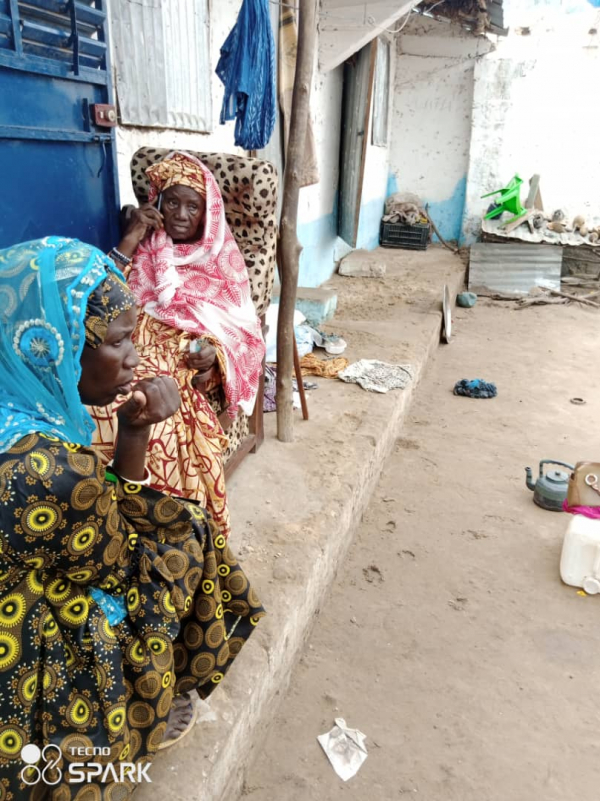
Village head Aji Haddy Panneh sitting in her sofa
“People didn’t have places to sleep and the men had no choice but to sleep outside and if the wind blew, they would rush to hide around the destroyed buildings.”
“It’s really painful here because we lost all kinds of stuff. The trees have fallen on materials and destroyed some motorbikes. Some people are here and they have nothing to eat, especially myself; and I have children who are wounded.”
“Support is forthcoming and we normally share it among ourselves but we still need more support,” said while acknowledging President Adama Barrow's support of 40, 000 dalais to the community.
Gambia Red Cross Society
“There is a need for the government to improve on the early warning system to ensure the public gets information ahead of disasters. If the people were updated about the windstorm in advance, the lives lost in the North Bank Region could have been saved, says Alasan Senghore, secretary general of the Gambia Red Cross Society (GRCS), who was speaking during a press conference a few days after the storm.
The GRCS had received a tune of over 200,000 Swiss Franc from the International Red Cross Society in Geneva, amounting D13 million dalasis. It was meant to support the people hit hard by the windstorm.
“We would be using cash transfers to 500 households around the country. So far, 1847 households have been assessed across the country.”
Loss of life
Kebba Saine, a father of seven and a husband of two from Njawara village had lost his 7-year-old child to the windstorm of 7 July 2021.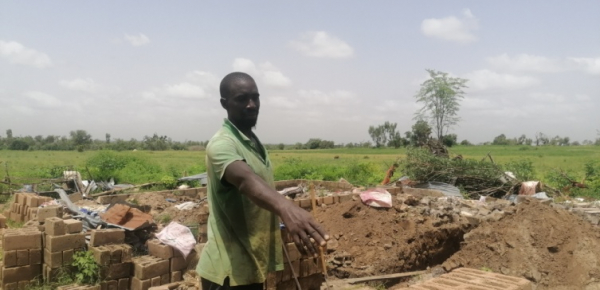
Saine on rebuilding his collapsed buildings
According to him, his entire building collapsed as the storm struck leaving him and his family homeless. The building fell on my 7-year-old child and she passed away and one of my wives had her leg broken and sustained injuries,” he narrated, adding that only God can protect one against the effects of climate change.
The windstorm had affected 85 compounds at Njawara, a village of over 100 compounds, although the magnitude of the entire damage has not been estimated.
Mr. Saine hails the National Disaster Management Agency (NDMA) for its swift response as he starts rebuilding his house to a smaller size while his family stays with his sister at a different village.
“I lost my entire poultry farm,” claims Haddy Panneh.
Mrs. Panneh had 250 chickens plus 200 chicks before they all perished in the 7 July windstorm. According to her, the chickens were ready for market.
Similar fate befell on Mama Jamba.
Mamoud Panneh said his entire building that was near completion had collapsed as a result of the storm. According to him, he invested almost 60,00dalasis before the disaster struck.
“This has caused me a serious setback,” he said, as he prepared for rebuilding.
The executive director of NDMA, Sanna Dahaba, blames natural disasters on people’s attitude.
“The biggest challenge when it comes to disaster management in this country is attitudinal change, as well as compliance and enforcement. These are also a big problem that my office faces because many people are settling at unregulated housing when most of them are built on waterways and indiscriminate dumping of waste which induces floods,” he said.
Resilience Building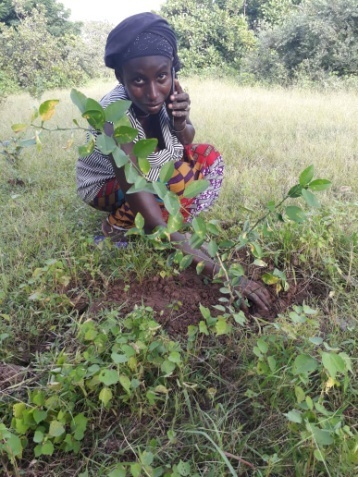
A Njawara native taking part in a tree planting initiative
Last year, the Action Aid International The Gambia (AAITG) in collaboration with NATC through the European Union funded Agro Ecology and Eco Restoration Project disbursed 1, 039,000 Dalasis to 36 beneficiaries of small holder farmers in 10 communities in the North Bank Region.
The project was designed to address the severe effects of climate change and stem youth migration while creating job opportunities on the other hand.
The NATC also dedicates part of its services on resilience building through vegetation production in which horticulturists can develop their own manure without using chemical fertilisers.
“We have lots of possible and adaptable technologies that farmers are taught resilience building methods against the effects of climate change. Tree planting is one of them; because here, we don’t sell trees to farmers. They come here and they are given trees to go and plant them,” he said, while emphasising on the need for people to change their attitude.
“We work in supporting communities, youth and women in how to care and restore the environment through a series of capacity building techniques.”
NATC also supports 50 differently abled persons in Jokadou and Lower Badibou in NBR with four goats each for them to manage and own.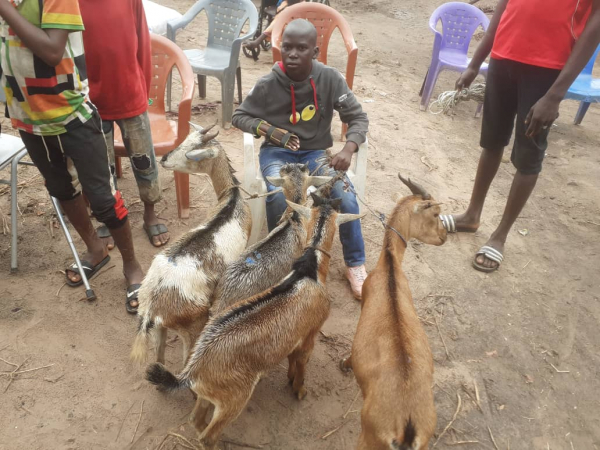
Resource mapping to establish degraded land that after farmers grow and nurse their own seedling, they would plant them in those degraded. They were also taught how to make improved cooking stoves from clay.
This work is written/produced by Bekai Njie with technical assistance from the West African Journalists Association (WAJA) and the Mano River Union Natural Resources Rights and Governance Platform (MRU CSO Platform).
Read Other Articles In Feature
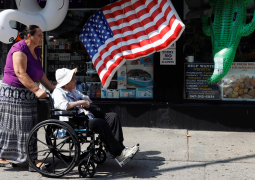
FEATURE: How disabled Americans are harmed by a system meant to help them
Aug 20, 2020, 12:08 PM
